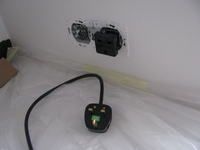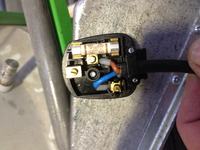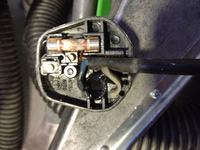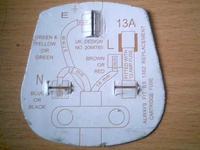elpapiotr wrote: And I ask why cut?

And I am asking why install such crappy grommets, which are usually made in China, built U-shaped plates screwed into the rod entering our sockets with a screw not secured even with a spring washer to save money. The consequences of this are simple - you can hear sparks in the grommet over time, or a fire at some power-hungry device.
Secondly, the arm becomes larger and a few movements of the cable cause this fun plug-grommet set to fall out of the socket, etc. Grommets are only good for trips.
15kVmaciej wrote: This solution was born in the 1940s, when material savings in installation works were sought.
The previous standard offered fuses in plugs, which was a more expensive and therefore niche solution. With the switch to a newer system, fuses became standard.

Here, the N is too short and even tight, so it will break quickly, even faster with a sleeve than without ... There was not enough space to form a gentle curve?







